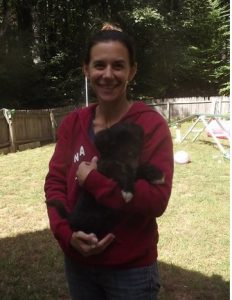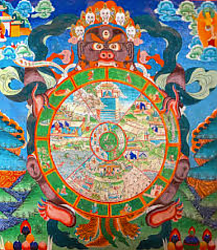Meet Qigong Teacher Beth Latchis
 The Burlington Shambhala Center is thrilled to welcome beloved teacher Beth Latchis to lead a two-day Qigong workshop November 5-6. We thought you would enjoy getting to know Beth!
The Burlington Shambhala Center is thrilled to welcome beloved teacher Beth Latchis to lead a two-day Qigong workshop November 5-6. We thought you would enjoy getting to know Beth!
How long have you been studying Qiqong?
I took my first Daoist Qigong program with Eva Wong at Karme Choling in 2007 so I have been practicing these particular forms and lineages for almost 10 years. I had previously learned Qigong in 1994 when I lived in Texas but that form had to be practiced in a group and there was not group in my city so I had to stop practicing. I was overjoyed when I encountered this form of Daoist Qigong which cultivates both mind and body and is the perfect compliment to my meditation practice.
How long have you been teaching and where have you taught?
I was invited to become an instructor in 2011 at which time I developed a training plan which included taking a year to study and observe the most senior teachers in action. I taught my first Qigong Levels 1 & 2 in 2012. So I have been teaching for four years. I had the good fortune to teach in San Francisco CA, Berkeley CA, Austin TX, Toronto, Akron OH, Philadelphia PA, Brunswick ME, Burlington VT, St. Johnsbury VT and White River Junction VT. I was recently authorized to teach Qigong Level 3 and will teach Level 3 in Berkeley CA in November.
What do you love most about it?
What I love most about teaching Daoist Qigong is seeing the transformation in the group as we (myself included) come into the synchronicity of body and mind being in the same place at the same time. Basically we practice together and have a lot of fun. I am always impressed by the exertion of the class and how quickly the body learns. What makes this style of learning refreshing is that we aren’t over engaging the conceptual mind to get it or even master it, whatever “it” is. We are invited to get out of the way and let the body itself guide the innate energies in the body. By virtue of slowing down, letting go and being present we quickly embody simple movements that are extremely healthy, authentic and transformative. When the program is over everyone has practice options to incorporate into his or her personal culture which requires very little time and has tremendous health benefits. Having the opportunity to share this unique combination of structure and total relaxation is a great gift.
How have you seen it help your students?
This weekend program has the potential to be highly transformative. Prior to one class I had an inquiry from a participant who was diagnosed with a herniated disc. At the end of the weekend she commented on how much better her back felt and how surprised she was at the change. I often hear from students during the program that they are finding relief from some physical ailment. Usually this is accompanied by a sense of wonderment because the forms are so simple and accessible.
Personally, I use it all the time as both a preventative measure and for a variety of daily woes such as headaches, emotional stress, stiff neck, tendonitis, tension, fatigue, etc. We learn a variety of techniques so there are options – tendon-changing for the muscles, bones and connective tissue, plus sleeping, standing and self-massage forms.
In ancient China physicians were paid a stipend as long as the client remained healthy, once the client became ill, the stipend stopped. So medicine was all about preventing illness. Practicing Daoist Qigong was one of the main ways of maintaining external and internal health.
If you are interested, follow this link to learn more about the upcoming Qigong workshop. New and experienced practitioners are welcome to join. There is limited space.





